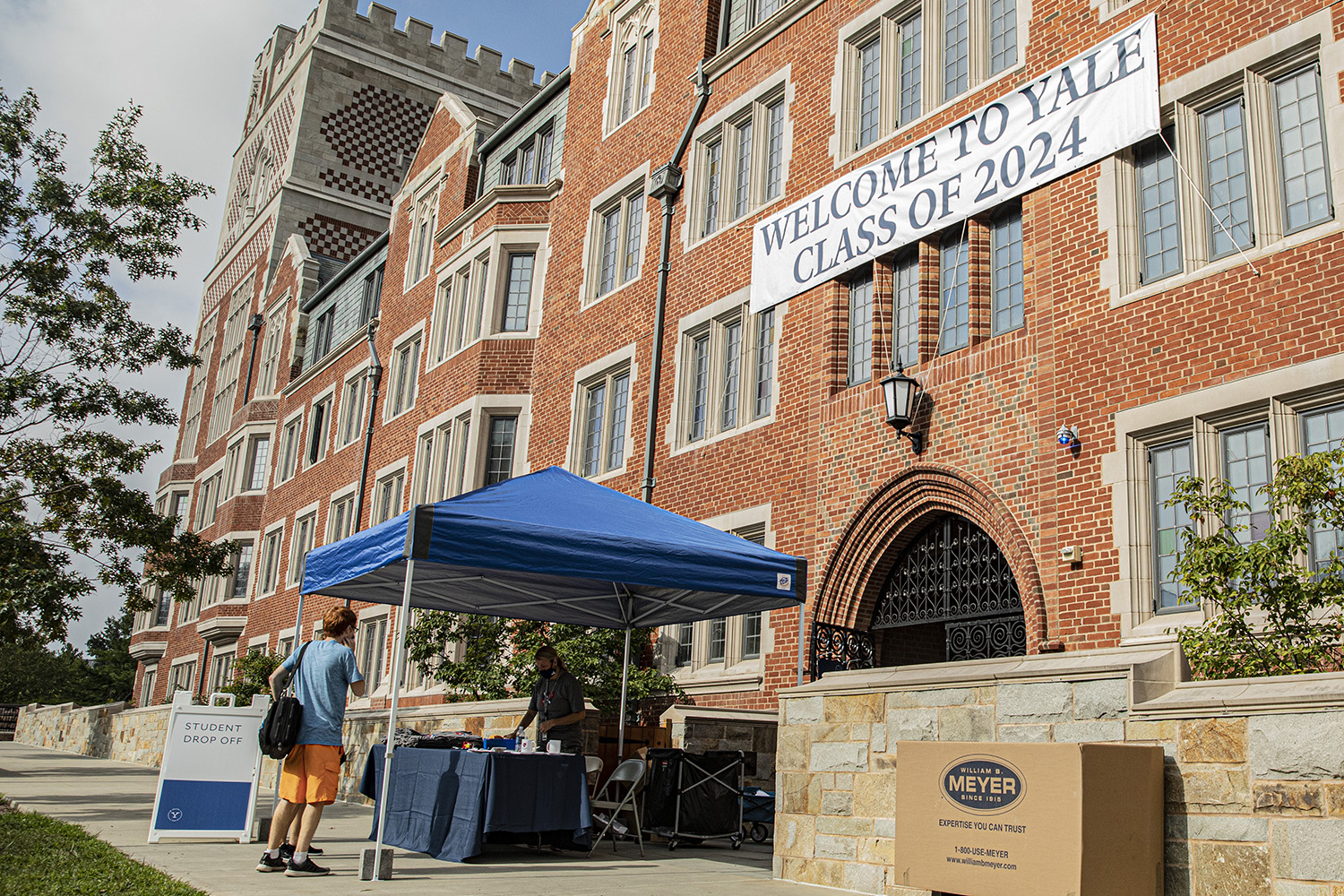Classes of 2024 and 2025 set record numbers for enrollment
The Yale College population hit a record high for the 2021-2022 school year, posing issues for housing and class sizes.

Yale News
For the 2021-2022 school year, Yale’s student body is bigger than ever, leading to the question of whether a larger Yale is the new normal.
The class of 2025 entered Yale as the College’s largest incoming class since World War II, according to the Office of Undergraduate Admissions. With a population of 1,789, the class is about 240 students larger than a typical incoming class. The admissions office attributed the increase to a record-high 335 students who opted to take gap years after originally being admitted to the class of 2024. University administrators told the News that the larger class sizes have led to course registration and housing adaptations.
“Over the past 18 months, the faculty and staff of Yale College have shown ingenuity, perseverance, and commitment to providing a Yale undergraduate education in challenging circumstances,” Dean of Yale College Marvin Chun wrote in a press release welcoming the class of 2025. “They are all looking forward, as I am, to welcoming this large and diverse group of new students to campus.”
Meanwhile, the class of 2024 also experienced a significant spike in population due to the large portion of the class of 2023 taking time off during the 2020-2021 school year amid the COVID-19 pandemic. In February, the Registrar’s Office reported that 1,759 students were considered members of the class of 2024, due to 568 members of the class of 2023 taking a leave of absence. The original class of 2023 consisted of 1,550 students. The Registrar’s Office declined to provide updated numbers for this school year when asked for comment.
Dean of Undergraduate Admissions and Financial Aid Jeremiah Quinlan told the News that the current size of the undergraduate student body will not impact the size of future classes and that the admissions office is expecting to admit a typically-sized class of 2026. Forty-five students admitted to the class of 2025 took a gap year, which is on par with a typical year, so the admissions office is not expecting the class of 2026 to be larger than normal.
Administrators told the News that the increased student population has created larger demand for classes and complicated last year’s housing allotment process.
Classes
Chun told the News that “planning was already underway last year that anticipated this year’s expanded class.” Yale faculty prepared for the increased student population and the larger demand for first-year and sophomore classes prior to the start of the semester. Actions the University took include hiring postdocs for some upper-level seminars, hiring additional instructors, adding additional sections for courses and shifting more resources into intro level classes such as English 114, the introductory mathematics sequence and the L1 to L4 language sequences.
“Even in the most typical of years, student interest is impossible to predict, so the first few weeks of term often involve the addition or movement of instructors across sections, particularly in multi-section courses,” Dean of Faculty of Arts and Sciences Tamar Gendler wrote to the the News. “Given how unusual this year is – we have the largest group of first-year students in Yale’s history by quite some measure – I would say that, despite some glitches (like last Thursday’s hurricane-caused flooding and power outages), things are going as smoothly as anyone could have hoped.”
Gendler explained that even with the careful planning amongst a wide range of offices, from the FAS Dean’s Office to the Registrar’s Office to the Yale College Dean’s Office, some last-minute adjustments were made in response to student interest in certain courses. Gendler cited as examples hiring two additional lecturers in Chinese to open up sections across multiple levels, adding two more sections of American Sign Language and adding additional spring 2022 sections of ENGL 114 after unexpected student demand arose in late August.
Still, there are enrollment caps on lectures, including large introductory classes like ECON 115, ARCH 160 and GLBL 392 — although most capped lectures were able to find additional teaching assistants to increase capacity.
Housing
The increased student population also created problems during the housing process last spring as increased demand for on-campus housing exceeded beds in some residential colleges. And due to the historically large size of the class of 2025, rather than living on Old Campus together like first-year students have historically done, this year’s first years are divided across campus, with some living in their college and others living on Old Campus.
Benjamin Franklin, Pauli Murray, Silliman and Timothy Dwight have long housed their first-year students in the college proper and will continue to do so. But this year, Branford, Davenport, Morse and Saybrook are also housing their years in the colleges, breaking with tradition and placing the sophomores on Old Campus instead.
“Living in Davenport, I would say there’s a bit of a bubble,” said Ken Hyunh ’25, a first-year student in Davenport. “It’s very strange sometimes when you only know people in one of the colleges. Sometimes it feels like we’re missing out on the events that happen on Old Campus, and that people on Old Campus are getting to meet more people in other colleges.”
But Huynh added that because eight residential colleges are housing first-year students in their college, many other students in class of 2025 are likely experiencing similar feelings and may begin to branch out soon.
In addition to living space, the expansion of Yale’s student population has created a need for more dining spaces and study spaces, Chun said.
Chun explained that the opening of the Schwarzman Center has increased capacity for dining and programming, and the opening of new classroom spaces on Science Hill and in the Humanities Quadrangle has created more space for learning.
Following a series of temporary closures over the years, Commons dining hall closed for a final time in 2017, opening this fall as the Yale Schwarzman Center.








